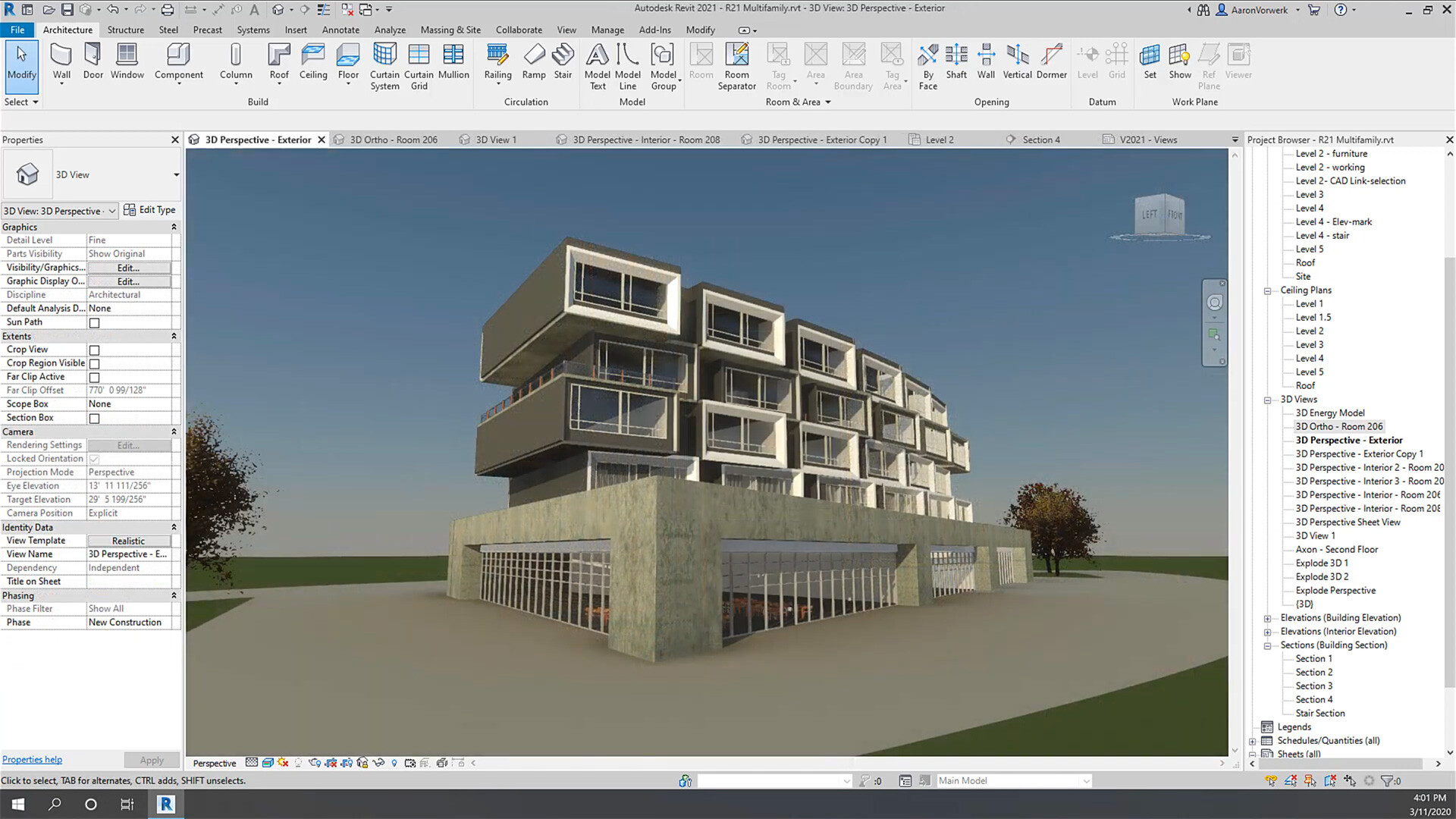BIM vs. Traditional Construction: Know which method is More Efficient for Civil Engineering Projects?
Table of Contents
Civil engineering is one of the second-oldest professions after military engineering. It is the process of allocating physical and scientific principles for designing, maintaining, and developing both the constructed and naturally built environment. It can include various infrastructures like bridges, airports, canals, dams, power plants, buildings, roads, railways, and more. Civil engineering's history reflects its growth in multiple areas, be it technology or construction.
There have been two effective ways to bring structures to life in the construction world. The oldest one is traditional construction, where skilled people and age-old procedures are implemented to create buildings. With the latest advancements in technologies, BIM (Building Information Modelling) in construction is taking over the world. It lets you create a virtual world where architects, engineers, and other stakeholders use digital tools to create an accurate representation of a building before actually constructing it in real life.
Read this blog to learn the difference between BIM and traditional construction methods and understand which is better for civil engineering projects.
Traditional Methods of Construction
Traditional construction methods show a region's cultural heritage, environmental conditions, and historical influences. These time-tested techniques have been passed down through generations, often using locally sourced materials and indigenous knowledge to create functional and sustainable structures. The construction process using traditional methods is labour-intensive and community-driven. In this process, architects usually create 2D drawings with their hands that are used to plan and execute the projects. Although it has been successful for many years, it also has some drawbacks as well.
1. Cons of the Traditional Construction Methods
Traditional construction is one of the oldest manual methods of creating buildings, which has multiple downsides. Here is a list of key cons of the traditional methods for creating structures:
- Lack of Coordination: In the traditional construction approach, the design and construction phases are segregated. Architects and engineers complete the design before contractors are even selected through the bidding process. This separation often results in a need for coordination between design and construction teams. Without the early involvement of contractors, opportunities for constructive feedback or suggestions for efficiency improvements in the design phase are missed. This approach can lead to misinterpretations of the design documents, resulting in construction errors and potential conflicts between parties.
- Limited Budget Control: Budget control in the traditional construction process is challenging because the project's total cost is clear only after the design is complete and the construction bids are received. If the amount exceeds budget expectations, the project may require design revisions or scope reduction, leading to delays and potential compromises in quality. It offers limited flexibility for adjusting the project scope or materials to control costs dynamically as the project progresses.
- Longer Project Timelines: Any design changes that are needed after construction starts can significantly delay project completion. Additionally, the lack of early collaboration between designers and contractors can miss opportunities for parallel task execution and time-saving through early problem detection and resolution.
Also Check out: Top BIM Trends for Civil Engineers to Know
2. Pros of the Traditional Construction Method
The traditional methods of building have been the foundation of the construction industry. Despite the technological advancements, it remains popular for multiple reasons, some of which are as follows:
- Defined Structure and Phases: The traditional method breaks down the project into clear, distinct phases that are design, bidding, and construction. This process allows for a high degree of planning and control at each stage, making it easier for clients to track progress, manage budgets, and make informed decisions.
- Risk Mitigation: The designer and architecture work separately, which mitigates risks associated with project execution. Since the contractor agrees to complete the project for a predetermined price after the design is finalised, the risk of cost overruns due to unforeseen design changes is minimised.
- Clear Accountability: With distinct roles for the design and construction teams, accountability is more defined in the traditional method. The architect is responsible for the design, while the contractor is responsible for building the structure as specified in the design documents.
BIM-Based Construction Methods
BIM modelling has shown a significant shift in the construction industry, with the latest BIM tools and software easing the process of designing and construction. BIM in construction is more than creating 3D models; it allows engineers to plan, design, construct, and manage buildings and infrastructure efficiently. It enables architects and engineers to collaborate in a shared digital space, enhances collaboration among stakeholders, allows early detection of potential issues, and helps make more informed decisions.
1. Cons of the BIM-based Contruction Methods
While BIM is changing the architecture industry, it also has some crucial cons you should know to make an informed decision. Here are the top 3 cons of BIM-based methods used in civil engineering:
- High costs: Implementing BIM in construction requires a substantial initial investment in software, hardware, and training. BIM software licenses can be expensive, and the hardware needed to run these programs effectively, such as high-specification computers, adds to the upfront expenses. However, this high cost is only a concern in the early BIM implementation days. Once the technology is implemented across the industry, the cost will be reduced.
- Managing Integrated Data: BIM models contain extensive data and managing this information effectively can be daunting. Ensuring the model is up-to-date, coordinating changes among team members and controlling access to sensitive information require robust data management protocols. Without managing it, the risk of data overload or misuse can compromise the project's integrity.
- Limited Usage: For small projects with tight budgets, the benefits of BIM may not justify the costs and efforts required for implementation. Smaller architectural firms and contractors might find the traditional methods more cost-effective and simple for small-duration projects.

2. Pros of the BIM-based Construction Methods
The implementation of BIM-based methods in construction offers a multitude of advantages, fundamentally changing how projects are delivered. Here are some of the key advantages:
- Enhanced Collaboration: BIM facilitates a more integrated approach where architects, engineers, contractors, and clients can work together more effectively. The shared use of digital models encourages seamless communication and coordination among all parties involved, reducing misunderstandings and errors.
- Cost Savings: BIM tools allow early detection of errors, which helps avoid unnecessary changes and rework during construction, leading to significant cost savings.
- Higher Quality Designs: The use of BIM software enables architects to visualise their designs in 3D from the earliest stages of a project, allowing for a deeper understanding of the relationships and functionalities of different elements of a structure. This leads to more thoughtful and innovative designs.
- Improved Efficiency and Productivity: Using BIM tools automates multiple drafting and designing tasks, reducing the time required for drawing and documentation. It allows architects to focus more on design and innovation rather than manual processes.
Learn BIM From Industry Experts
For professionals looking to upskill or students aiming to enter the field with a strong knowledge base, several offline and BIM online courses are available. One such course is offered by Novatr:
BIM Professional Course For Civil Engineers By Novatr

Duration: Eight months
Fees : 1,95,000
Mode: Online
This BIM Professional Course for Civil Engineers typically aims to help students and professionals with an in-depth understanding of BIM technology and methodologies specifically tailored to the needs and challenges of civil engineering projects. The syllabus covers a comprehensive range of topics, from the fundamentals of BIM, including 3D modelling and simulation to more advanced subjects, such as integrated project delivery, collaboration techniques, and the application of BIM in the planning, design, construction, and management of infrastructure projects. The modules given in the course focus on BIM software tools commonly used in the industry, like Autodesk Revit, Civil 3D, and Bentley Systems products, providing hands-on training to enhance practical skills.
Learn how Novatr is shaping the future of BIM globally
Novatr is not only helping AEC professionals staying updated with the ever-evolving AEC industry but also facilitating students in equipping the skills and knowledge that will be valuable in the future as well.
- Diverse range of courses - Novatr offers a range of courses for engineers, architects, and civil engineers. These courses are designed to upskill them and offer them a comprehensive understanding of BIM. The carefully curated curriculum covers a plethora of major topics while teaching industry-relevant essential softwares.
- Upskilling the AEC professionals of tomorrow - Novatr teaches tech-first skills to the learners that AEC companies are looking for. It is steadily bridging the gap between education and industry needs.
- The Novatr Difference - Novatr’s BIM online course for Civil Engineers is not just a simple program but a manifesto of change in the civil engineering world. Our updated course elevates the learning experience with impactful outcomes.
Also Check out: What Kind of BIM Skills Companies are looking in Civil Engineers
2. NICMAR
Course: MBA in Digital Transformation and BIM Management
Duration: Two Years
Mode: On-Campus
This course is designed to bridge the gap between traditional construction management practices and the rapidly evolving digital technologies reshaping the industry. The curriculum likely integrates core MBA subjects such as management principles, strategic planning, and financial analysis with specialised training in digital tools and methodologies, including BIM, artificial intelligence in construction, and project management software. The benefits of pursuing this degree include gaining a competitive edge in the job market, enhancing leadership skills for digital project delivery, and developing a deep understanding of how to leverage technology for improved efficiency, sustainability, and profitability in construction projects.
3. TechnoStruct Academy
Course: BIM Ready (Arch + Structure)
Duration: Four-and-a-half months
Mode: Online
It is a highly recommended course that helps professionals with foundational and advanced skills in BIM with a special focus on architectural and structural design. The syllabus for such a course likely covers a range of topics, from basic BIM concepts and principles to using specific BIM software tools like Revit for Architecture and structural design, Navisworks for project review, and clash detection, specifically for creating detailed architectural and structural models.
4. Skill-Lync
Course: BIM in AEC Industry using Revit
Duration: Three months
Mode: Online
This course by Skill-Lync offers a deeper understanding of BIM within civil engineering, leveraging Autodesk Revit as a primary tool. It covers Revit fundamentals, including creating detailed architectural, structural, and MEP (mechanical, electrical, and plumbing) models. It also offers knowledge of advanced topics like collaborative workflows, clash detection, and BIM project management, emphasising the application of these skills in real-world civil engineering projects.
5. Graphisoft
Course: Archicad BIM Manager Certification Program
Duration: 10 weeks
Mode: Online
This course covers a range of topics tailored to developing proficient BIM managers, including advanced modelling techniques, efficient use of Archicad tools, project coordination and collaboration, BIM standards and workflows, and project management within the Archicad environment. Completing the Archicad BIM Manager Certification Program would help professionals and aspiring civil engineers with the skills to effectively manage complex BIM projects, ensuring that they meet industry standards and client expectations.
Conclusion
Both the courses have their relevance; however, in the comparison between BIM and traditional methods for civil engineering projects, BIM stands out as the more efficient and beneficial approach. BIM's digital, model-based process offers unparalleled advantages in terms of collaboration, accuracy, and project management. It integrates all project data into a unified, accessible model and facilitates seamless communication among all the stakeholders involved in the civil engineering project. If you want to apply for a BIM Professional Course for Civil Engineers, you can reach out to Novatr.
To learn more about the industry trends, check our Resource Pages!

 Thanks for connecting!
Thanks for connecting!



.png)



